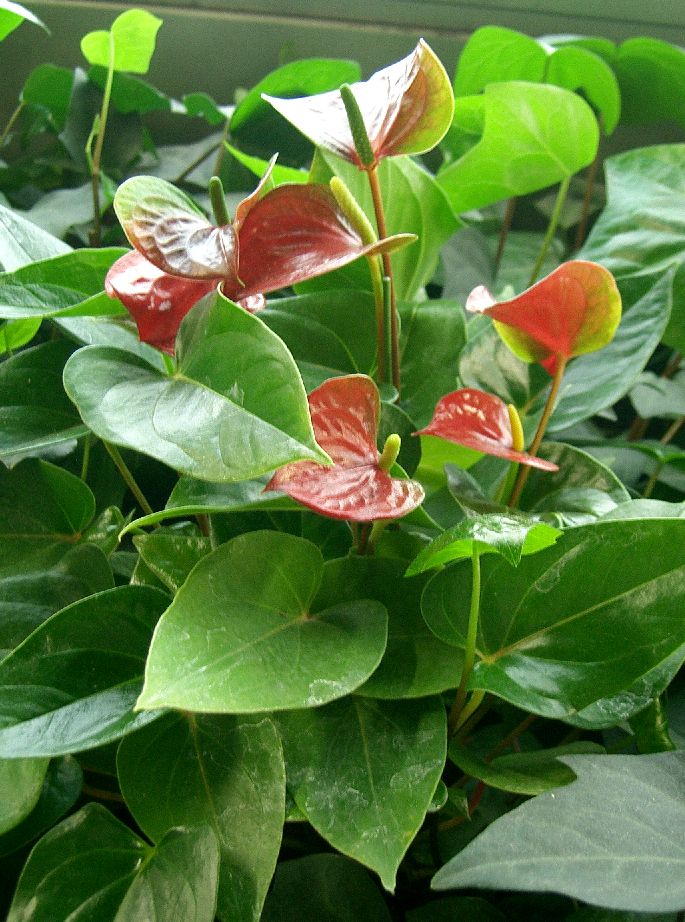
Also known as tailflower, painter’s palette, oilcloth flower, and laceleaf this evergreen herbaceous perennial is native to the rainforests of Colombia and southwestern Ecuador and a member of the arum family, Araceae, that also includes peace lily, skunk cabbage, and jack-in-the-pulpit. The plant grows 12-18″ tall and has dark green, heart-shaped leaves that are carried on long stems and are 8-12″ long. The tiny cross-shaped flowers are carried on a creamy yellow, fleshy structure up to 3.5″ long, the spadix, that is surrounded by a waxy, red spathe, up to 6″ long. The inflorescences appear throughout the year under optimal conditions and last a long time both on the plant and in the vase. The fruit is small, round, and yellow but rarely produced by indoor plants. Flamingo flower is a popular houseplant and its flowers are highly valued for fresh arrangements. The genus name, Anthurium, comes from the ancient Greek words ᾰ̓́νθος (ánthos) meaning flower, and οὐρᾱ́ (ourā́) meaning tail, and refers to the appearance of the spadix. The specific epithet, andraeanum, honors Edouard F. Andre (1840-1911), a French botanist and horticultural editor.
Type: Evergreen herbaceous perennial
Bloom: Waxy red heart-shaped spathe surrounding creamy yellow spadix of tiny flowers year round in optimal conditions
Size:12-18″ H x 8-12″ W
Light: Bright or diffused/filtered light
Soil: Fertile, humusy, consistently moist, well-drained; likes high humidity
Hardiness: Zones 11-12
Care: Apply high phosphorous fertilizer routinely; grow on pebble tray.
Pests and Diseases: Mealybugs, spider mites, white fly, scale, rots, blight and leaf spot
Propagation: Division in winter
Outstanding Selections: ‘Album’ (white spathe)
Photo Credit: KENPEI Wikimedia Commons